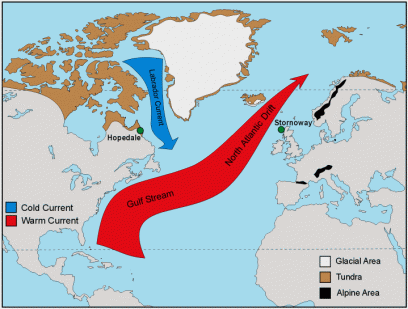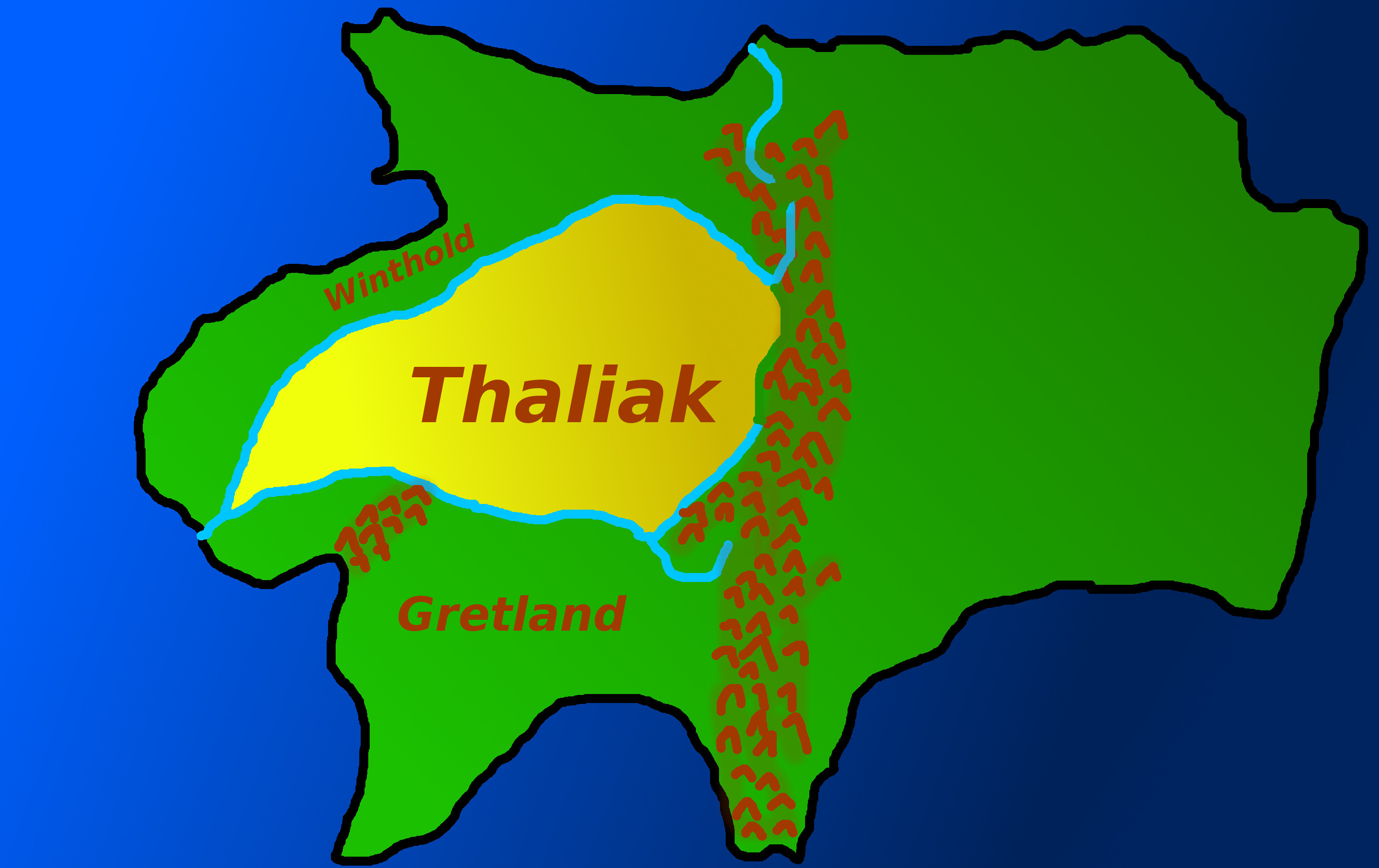Is this desert possible?
Yes, If you have cold ocean currents flowing south from the cold northern hemisphere regions and an predominant onshore wind direction you can get a dry interior where you want it. Without a gulf stream equivalent bringing warm moist air to the West coast of your northern reaches (Europe), you can have much dryer conditions in your Winthold and Thaliak regions.

I drew all over your map (not as nicely as Hofmannfan). I guestimated your equator. But feel free to move it if necessary. This is just to show you the idea.  Black - Equator. Red - warm ocean current. Blue - cold ocean current. Green - predominant wind direction. Numbers - rough temp scale indication
Black - Equator. Red - warm ocean current. Blue - cold ocean current. Green - predominant wind direction. Numbers - rough temp scale indication
Wind flowing over cold water is generally dry. As soon as the wind hits land it will no longer pick up any new moisture and become dryer and dryer the further into the interior you go. In our world on a west coast, with a cold ocean current this normally means fog banks and very little actual moisture making it far into the interior Eg Namib Desert in SW Africa. It would be a different story if you had had an east coast with a warm ocean current and no mountain range blocking it, this would have allow the moist air to reach quite far inland (eg north America great plains).
The Winthold coast will have slightly more rain than the Thaliak regions. As any moisture the coastal air is holding will fall first on the coast and then the winds will become drier and drier the further East you go.
With your N/S mountains, you will be pulling cold air down from the Arctic nearly all the way to the Equatorial regions. Expect some mega storms when warm air meets cold air. But back to the desert. Cold air will flow from the mountain to the interior (mountain anabatic winds), bringing very cold dry air to your Thaliak desert region eg 'Berg winds. Winds blowing in the opposite direction, katabatic winds (typically sea breezes) would be weaker and wouldn't bring much moisture to the mountain range. What little air moisture there is, will experience orographic uplift and probably fall as a light sprinkling of snow along the entire stretch of your range.
The only reason Gretland isn't dried out by the dry winds from the mountains is because of the Hadley cell circulation. This is where hot moist air rises at the equator and sinks at roughly 30 degrees North and south of the equator (the tropics). You might want to move the equator a bit further south than in my drawing. This will still allow the Thaliak desert region to exist. Probably a bit better as my map doesn't give the currents a lot of time to cool down!

Can I have 1 or 2 major rivers?
Your northern and eastern Thaliak regions will be drier than the south and western regions which could still receive some rainfall. Rivers can flow anywhere you like, as you will have a large amount of snow in your northern mountain regions. This can supply water for rivers. You just have to decide where to place them. If you wish to keep the NE regions as dry as possible, have only very small streams/rivers flow out in the top sections of the desert and the main river/s flow further South and then across to the west.
This river supply could also explain why Winthold is more fertile as the river winds it's way through the coastal hills.
One thing to take into account, the rivers formed from the rainfall from the Hadley cell convection should not be allowed to flow into the Desert (too much or too frequently). You need a geological boundary to force the river flow back into Gretland. This does not need to be a mountain range, but a change in underlying rock type or tectonic fault line will do the trick. Even a small range of hills should prevent the rivers from flowing north (if you use a fault line, lots of water can trigger frequent earthquakes).
Your current map, shows a mountain range jut out of your N-S range. This should prevent any rivers from flowing directly into your driest desert regions. You can have a major river flow through the SW Thaliak region into S Winthold.
Large groups of trees in the desert?
Wherever there is water, you can have vegetation. You can have several smaller rivers from the north mountains feed underground aquifers. These could provide water for several oasis's in your dry region if you wish. You can also have hidden valleys, protected from the cold dry wind. If water flows through them they can be little Sangri La's. Pretty much, if you want them, you can have them. Just justify where the water is coming from. It doesn't have to be air or surface based moisture.
Where would I find mines?
This is really a whole other question. But quick answer. ANYWHERE you want them. Geological deposits are not constrained by current-day surface conditions. You can give your world any sort of geological history you feel necessary to explain why you have certain deposits where you have them. The trick is to explain how your inhabitants found them. This is why a lot of mines are found in the mountains. The rock we were interested in was very near the surface and we literally tripped over the shiny metal stuff.
Granite, marble etc are metamorphic rocks and formed during intense heat (think lava). The finer grained rocks will have cooled over a much longer time/higher pressure than the coarser grained rocks. Generally that can mean that the coarser grained rocks will be found above the higher 'quality' stuff.
Rivers wash away rocks and minerals from the mountains, and are another excellent source of 'easy' mining. Gold, Diamonds, Titanium, Aluminium can all be found in alluvial deposits.
Like I said, you can decide what you want and where, and then if you really need to you can research the geological history of your world...as long as you can explain why your inhabitants knew there was a deep gold reef at location X, you don't have to explain how the gold mine actually got there.




